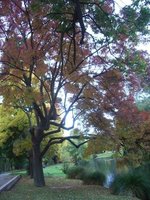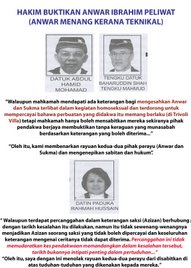Monday, December 10, 2012
Reconciling with Rare Earths in Malaysia
“Rare Earths” are a group of 17 elements that are currently used in a wide array of modern technologies, ranging from hard disk drives to lamp phosphors to hybrid car batteries. At present 90% of these minerals are mined in China due to a range of economic and environmental factors. In 2012, an old rare earth mine in California reopened and the next major rare earth mine is on track for going into full production in 2013 at Mount Weld, Western Australia (owned and operated by Lynas Corporation). The ore from the Mount Weld mine will be milled and processed in Malaysia and this remote processing operation has caused considerable environmental conflict in Pahang state.
This article is authored by Bernadetta Devi, my colleague from the Centre for Social Responsibility in Mining who visited the Lynas Corporation Ltd processing and refinery plant in Malaysia in October, 2012 to develop an independent perspective on the current status of the rare earths industry within Malaysia and to identify opportunities for research that could mitigate environmental conflicts on this issue, given its importance for providing important materials for green technologies worldwide.
A 'rare earth' processing plant near Guangzhou, China: Majority of the world's rare earths are still mined and processed in China. Photograph by Saleem H. Ali
Context
The rare earth industry within Malaysia has been the focus of intense political scrutiny, social activism and media interest during the past 2 years, in light of the Malaysian Government approval of the construction and operation of a $1 billion rare earths processing and refinery plant at Kuantan in Pahang State. This facility is owned by Australian corporation Lynas and commonly referred to as the “Lynas Advanced Materials Plant” (LAMP).
In August 2012 the first phase of the LAMP was completed to accommodate 30,000 tonnes of raw materials that are shipped from the Lynas Corporation Mount Weld mine site in Western Australia. It is envisaged that the processing of the raw materials will see Lynas produce rare earth oxides at 11,000 tonnes per annum. The second phase of the LAMP project is still being constructed and when finished, the production of Lynas rare earth oxides will be doubled. The company has commenced its first production following the November 2012 decision by the Kuantan High Court to allow processing to proceed (which continues to be under appeal but likely to move forward).
Current Debate
At present, there is a clear polarization of the debate surrounding the Lynas LAMP plant and its activities. For example, the Lynas proponents consistently point to the significant contribution the LAMP will provide to the Malaysian economy. Those against the LAMP argue there will be considerable negative implications to the environment and society in Pahang State arising from the operation of the LAMP and this will in turn have a negative effect on the Malaysian economy.
Most notably, The Academy of Sciences Malaysia and the National Professors’ Council recently produced the report ‘Rare Earth Industries: Moving Malaysia’s Green Economy Forward’ based on the inaugural rare earths symposium held in Kuala Lumpur, Malaysia in 2012.
This report identified two important drivers for the rare earths industry in Malaysia:
1) The rare earths industry can contribute to, and support the development of, a green economy both domestically and globally.
2) As a nation, Malaysia will significantly benefit from the contribution of rare earths to the global market. This is an important point to consider as the global supply of Rare Earth Elements (REEs) is dominated by China (approximately 97 per cent of global production).
With the advanced technologies and perceived benefits, the rare earth industry is seen as a promising new growth area under Malaysia’s New Economic Model of the 10th Malaysia Plan aiming to transform the country to a developed nation by 2020. Lynas, (a company that is listed on the Australian Stock Exchange) is a key contributor to the undertaking of the 10th Malaysia Plan as the Plan seeks to derive its objectives from predominantly private sector investment.
The government policy on Lynas however has received strong criticism from a number of stakeholders including opposing political parties. The most identifiable movement against the LAMP is that of the Stop Lynas Save Malaysia (SLSM).
This NGO has received widespread media attention and political coverage in their rejection of the LAMP which they state is essentially flawed and dangerous due to:
- A poor project approval process that did not adequately engage with Malaysian civil society and the communities in the vicinity of the LAMP.
- Government approval for the LAMP which was not based on any evidence based studies
- The potential for future high-risk uncertainties, namely health, safety and environmental concerns from the operation of the LAMP
- The Government providing a 12 year tax holiday for Lynas and this will reduce the flow-on economic benefits to the Malaysian people.
Essentially, for the past two years the opposing parties have continuously questioned the decision to allow Lynas to construct and operate the LAMP facility in Malaysia.
Lynas, however, have been open in its responses to this question, with its Chairman recently stating (during the Lynas Corporation 2012 Annual General Meeting) that Lynas undertook a ‘thorough due diligence process’ to choose a 100 hectare, dedicated petrochemical industrial park in the Malaysia’s East Coast Economic Corridor that considered factors such as:
- Adequate physical infrastructure that support the chemical industries
- A readily available workforce that is specialised in chemical refining
- Close proximity to key rare earths markets
- Regulations that support a value-adding industry
Continuous monitoring data at LAMP facility in Malaysia to address concerns about pollution. Photograph by Bernadetta Devi
By locating LAMP in the Malaysian East Coast Economic Corridor, Lynas considers the LAMP will create a cluster of secondary positive economic impacts through high technology industries which align with the Malaysian government’s vision in its economic policy.
Furthermore, Lynas and the Malaysian academia believe that with its advanced technologies, LAMP activities will have very small concentration of radioactive in the residues of rare earths processing and refinery. Importantly, Lynas continues to develop its technology to promote sustainable development within the rare earth industry including innovation in recycling residues from the LAMP activities.
The exhaustive list of conflicting arguments from both parties could be seen as valid based on values, beliefs and needs that are followed by each party.
However, the inability between both parties to fully appreciate the needs and concerns of the parties differing viewpoints is effectively protracting the debate and conflict. It is therefore necessary that workable strategies are developed from both sides of the debate to bring to the table to create a sustainable long-term solution to this issue.
Opportunities from Conflicts
A brief analysis of the Lynas case based on feedback received during the field visit showed that there have been some changes within Malaysia in relation to heavy industries. Those changes potentially can assist the improvement of rare earths industry as well as heavy industry in general.
1) Evidence based policy making – Lynas has been scrutinised by many different ‘independent’ bodies. Despite debate on the objectivity and dependency of the chosen bodies that scrutinised Lynas, the involvement of these bodies could be seen as a process to improve the evidence-based policy making in Malaysia. Although Lynas’s scrutiny process did not occur until the LAMP was almost fully constructed, it is hoped, that evidence-based policy could always be utilised to assist the Malaysian Government create their policies specifically for Lynas or other similar heavy industry enterprises. Essentially, an evidence-based dialogue always promotes enriches decision making process in so long as there is accountability and transparency throughout this process. Ongoing oversight authority from academic bodies who will monitor the progress of the plan will be important in building and maintaining trust.
2) ‘Better’ environmental measures and mitigations for heavy industries – Feedback received stated that Lynas has adhered to more stringent environmental requirements in comparison to other companies. Lynas has implemented advanced environmental measures to monitor and mitigate their environmental impacts for example, the digital air monitoring which is an extra requirement that is specific to Lynas and the latest technology to capture the emitted gases. It is worth considering that this requirement imposed on Lynas has not been imposed to other heavy industries that co-share with Lynas due to aggregate cumulative impacts in the Gebeng Industrial Park. To answer the pessimistic argument on the capacity of Malaysian Government in enforcing its environmental regulation, it is important to have an independent monitoring of the aggregate environmental impacts in Gebeng.
3) Better multi-stakeholders engagement and consultation – The legacy of Lynas not undertaking a Detailed Environmental Impact Assessment (DEIA) has severely affected the social performance of Lynas. This, however, has assisted the Malaysian Government to review its EIA process and legislation requirement e.g. to include automatically any radio-active potential waste from heavy industry to conduct DEIA. The significance of DEIA is on the public consultation aspects. However, this public engagement in many cases is not sufficient to promote the company’s “social license to operate.” It is important for companies to continuously and voluntarily promote community and multi-stakeholders engagement in their activities. As the middle class with better education in Malaysia society increases, they are demanding for a more transparent and open decision-making process, particularly for matters that could affect the environment where they live. During this visit, it was revealed that the demand for public involvement in the decision making should be undertaken earlier in the investment planning process by the Malaysian government.
4) Information sharing between technocratic and social-humanities disciplines – it is apparent that there is a need to have an integrated research in the rare earths field that considers the technology / technical aspects of rare earths and social / humanities implications. Social studies may aid technocrats to ensure meaningful findings that suit the needs of the local community and vice versa. As the rare earth industry continuous to grow, this has also attracted international research institutes to develop a research focus on this field. For this, the Malaysia research institutes and interested NGOs will be of strategic importance to collaborate in such initiatives.
Conclusion
Lynas has a vision of being “the global leader in Rare Earths for a sustainable future.” There is potential for regional economic development to occur in Malaysia alongside this vision. However, risk communication and conflict resolution strategies will need to be more proactively managed by the firm. At the same time, activists will need to be more pragmatic in their goals and consider the costs and benefits from a more science-based (or evidence-based) approach rather than through confrontational litigation strategies that are likely to fail.
Risk perception of radiation exposure can be managed through a vigorous monitoring program that has already been put in place by The Atomic Energy Licensing Board.
The trust-deficit between the company and the community can be bridged through a more deliberative public-private partnership around community engagement at regular intervals.
The demand for rare earths is likely to grow dramatically in coming years and Malaysia can play an important role in leading the way in showcasing how a modern processing facility can be effectively managed to minimize risk. Constructive engagement between civil society and industry needs to be facilitated by the government.
New metrics to evaluate cumulative impacts and a willingness for industry to adapt accordingly through the life-cycle of the plant is likely to further the goals of making this project more acceptable. Much has been achieved by Malaysia in its development path and as with any industry from palm oil plantations to oil extraction to mineral process, there are trade-offs. Diversification of the economy through a variety of strategies to meet the demands of the local population as well as providing essential products for modern societies must remain a long-term objective as this project and others in the sector move forward.
Postscript and acknowledgements: The University of Queensland is in the process of establishing a rare earths research consortium involving universities, mining companies, recyclers, downstream manufacturers, governments, international agencies and civil society groups. Our goal will be to provide a forum for consolidating research that helps to improve the performance of this sector on ecological and social terms. We would like to acknowledge the assistance accorded for the field visit by Lynas Corporation: Mike Vaisey – Vice President Research and Technology and Muthuchamy Suruli Bommu (Sustainable Project Research and Technology Leader); The University of Malaysia Pahang: Prof Dr. Badhrulhisham bin Abdul Aziz, p. Eng, M.I.E.M (Deputy vice chancellor for academic and international relation, University Malaysia Pahang) ; and The Academy of Sciences of Malaysia Dr Ahmad Ibrahim (Chief Executive Officer); Datuk Ir Dr Hj Ahmad Zaidee Laidin FASc (Council Member) and Mr Loganathan Ponnambalam F.ZI.G.M – (Project Coordinator).
Posted by Saleem Ali of University of Queensland (Australia)
Guest article by Bernadetta Devi
Subscribe to:
Post Comments (Atom)














 Malaysian Ringgit Converter
Malaysian Ringgit Converter





























No comments:
Post a Comment